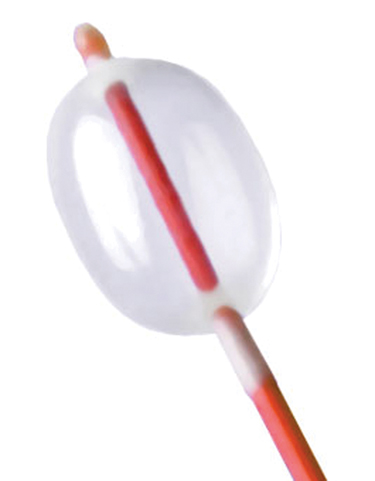A transverse arteriotomy of a normal size and a nondiseased common femoral artery is favored, although a longitudinal arteriotomy should be considered if there is suspicion for underlying chronic occlusive disease that might require adjunct endarterectomy with patch angioplasty or femoral–distal bypass. Before the arteriotomy, the surgeon should confirm the embolectomy balloon is concentric during inflation with saline (Figure 1). Attempts at restoring inflow should start with the retrograde passage of a 5-Fr catheter through the common femoral artery. The catheter should be advanced to the level of the iliac bifurcation (approximately 50 cm), the balloon should be inflated with saline (not air), and the catheter should be withdrawn without releasing tension on the catheter. The person who is controlling catheter removal should control the balloon inflation. This maneuver should be repeated until the balloon returns clean of further thrombus and there is robust arterial inflow. In cases of an aortic saddle embolus, it is imperative that manual compression of the contralateral groin and femoral artery be maintained during balloon withdrawal to decrease the risk of distal thromboembolism in the opposite lower extremity. The retrieved embolic material should be sent for both culture and pathology assessment if there is any concern for infectious endocarditis or atrial myxoma.
Balloon Catheter Embolectomy for Macroembolization in the Extremities
Operative Technique
![]()
Stay updated, free articles. Join our Telegram channel

Full access? Get Clinical Tree


Thoracic Key
Fastest Thoracic Insight Engine

